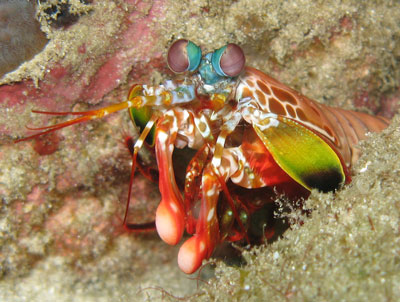They’ve been going hot and heavy at Canada’s national museums in Ottawa this last few months. First, there was a brouhaha over corporate patronage and energy in January 2012 and, again, in April 2012 and now, it’s all about sex. While I’m dying to get started on the sex, this piece is going to follow the chronology.
The CBC (Canadian Broadcasting Corporation) website has a Jan. 23, 2012 posting which notes the active role Imperial Oil played in a November 2011 energy exhibit (part of a multi-year, interactive national initiative, Let’s Talk Energy) at the Canada Science and Technology Museum (from the CBC Jan. 23, 2012 posting),
Imperial Oil, a sponsor of the Museum of Science and Technology’s exhibition “Energy: Power to Choose,” was actively involved in the message presented to the public, according to emails obtained by CBC News.
The Ottawa museum unveiled the exhibition last year despite criticism from environmental groups like the Sierra Club, which questioned why it was partly funded by the Imperial Oil Foundation, which contributed $600,000 over six years.
Apparently, CBC reporters got their hands on some emails where the Imperial Oil Foundation president, Susan Swan, made a number of suggestions,
In an Oct. 3 [2011] interview on CBC Ottawa’s All in a Day, host Alan Neal asked exhibit curator Anna Adamek whose idea it was to include in the exhibit a reference that says oilsands account for one-tenth of one percent of global emissions.
“This fact comes from research reports that are available at the museum, that were commissioned by the museum,” Adamek told Neal.
…
But earlier emails from Imperial Oil Foundation president Susan Swan obtained by Radio-Canada through an Access to Information request show she had recommended that information be included back in May [2011?].
Swan, who also served as chair of the advisory committee to the project, also asked that information be included that the oilsands are expected to add $1.7 trillion to the Canadian economy over the next 25 years.
Not all of Swan’s requests made it into the final exhibit: in one point, she asked that an illustration for Polar Oil and Gas Reserves be changed from red to blue, arguing red “has a negative connotation” bringing to mind “blood oil.” The change was not made.
Personally, I love Swan’s semiotic analysis of the colour ‘red’. I wonder how many graphic designers have been driven mad by someone who sat through a lecture or part of a television programme on colour and/or semiotics and is now an expert.
If you’re curious, you can see the emails from the Imperial Oil Foundation in the CBC Jan. 23, 2012 posting.
A few months later, Barrick Gold (a mining corporation) donated $1M to have a room at the Canadian Museum of Nature renamed, from the April 24, 2012 posting on the CBC website,
Environmental groups are upset over a decision to rename a room at the Canadian Museum of Nature after corporate mining giant Barrick Gold.
Barrick Gold Corp., based out of Toronto, purchased the room’s naming rights for about $1 million. The new “Barrick Salon” is the museum’s premier rental space featuring a circular room with glass windows from floor to ceiling.
The decision had activists protest at the museum Tuesday, a few hours before the official naming reception that includes Barrick Gold executives.
…
“It’s definitely not a partnership, it’s a sponsorship,” said Elizabeth McCrea, the museum’s director of communications. “We’re always looking at increasing self-generated revenue and this is one way that we’re doing it.” [emphasis mine]
Monarchs and wealthy people have been funding and attempting to influence cultural institutions for millenia. These days, we get to include corporations on that list but it’s nothing new. People or institutions with power and money always want history or facts * presented in ways that further or flatter their interests (“history is written by the victors”). They aren’t always successful but they will keep trying.
It’s time now to add sex to the mix. Canada’s Science and Technology Museum is currently hosting SEX: A Tell-all Exhibition, which has caused some consternation in our country’s capital (Ottawa), from the May 16, 2012 article by Althia Raj for the *Huffington Post (Canada),
Canada’s Science and Technology Museum has abruptly raised the age limit for a controversial sex exhibit after Heritage Minister James Moore’s office raised concerns and more than 50 individuals complained.
Moore’s office called museum president Denise Amyot to complain that Sex: A Tell-All Exhibition [sic] is completely inappropriate.
“The purpose of the Museum of Science and Technology is to foster scientific and technological literacy throughout Canada,” said Moore’s spokesperson James Maunder.
“It is clear this exhibit does not fit within that mandate. This content cannot be defended, and is insulting to taxpayers,” he said.
This show had already been run in Montréal (where it was developed by the Montréal Science Centre for children 12 years and older) and in Regina (Saskatachewan), without significant distress or insult.
Since the show opened in Ottawa, the National Post has run a couple of opinion pieces (against [Barbara Kay] and for [Sarah Elton]). Here’s Barbara Kay in her June 12, 2012 piece decrying the ‘porn exhibit’,
In On Liberty, the Ur-text for many free speech libertarians, John Stuart Mill argues that the demands of liberty and authority will always struggle, because the one cannot exist without the other. And so “some rules of conduct, therefore, must be imposed — by law in the first place, and by opinion on many things which are not fit subjects for the operation of law.”
Many of Mill’s devotees would be surprised to learn how much weight he gave to social opprobrium in matters that cause “offence” to the public. By “good manners,” Mill was clearly thinking, at least in part, about community standards of decency. Which brings us to the recent controversy over “Sex: a Tell-All Exhibition” at Ottawa’s Museum of Science and Technology.
…
But in truth my deeper concern is the exhibition’s indecency, and the harm it will likely do by titillating children’s imaginations in a way that runs counter to a natural sense of personal modesty.
I gather Kay is accustomed to being thought a ‘libertarian’. The problem with labels of these kinds is that you will find yourself in a corner because, at some point, the philosophy goes too far in a direction you’re not willing to follow. I’ve never met anyone who isn’t inconsistent on occasion and this is where Kay is inconsistent in her libertarian philosophy. She references a 19th century philosopher to justify her discomfort and her desire to censor information about sex.
Elton in her June 12, 2012 piece frames the discussion quite differently, almost as if she were the libertarian,
When a publicly funded museum censors an exhibit after the minister who funds museums in Canada questions its content, it is an attack on our democracy. What we talk about in our museums — the stories we tell each other in these public forums — helps to determine who we are as a country.
The Canada Museum of Science and Technology receives most of its funding from the government, as do most other museums in Canada. It is not a stretch to believe that this could be the dawn of a content chill here, as curators in the months ahead question their decisions about which exhibits to mount and what to put in them.
Given the issues with corporate and other patronage that museums and other cultural institutions routinely encounter, Elton’s comments seem a little naïve to me. However, both she and Kay raise points that bear examination and I think the National Post should be recognized for the decision to present these viewpoints. Thank you.
As for James Moore, Minister of Canadian Heritage and Official Languages, he’s from my neck of the woods, (Conservative Member of Parliament representing Port Moody – Westwood – Port Coquitlam, British Columbia). While I’m not in his constituency, I would like to note publicly that neither he nor his spokesperson, James Maunder, represent my view. I’m neither insulted nor do I believe that the SEX: A Tell-all Exhibition is outside the museum’s mandate.
After writing that last sentence, I checked and found this description of the museum’s mandate on their About the Canada Science and Technology page,
The Museum’s mandate, to study the “Transformation of Canada,” can be broken into sub-themes:
- Canadian Context:
Context shapes the evolution of science and technology. Canadian achievements reflect the challenges overcome and the choices made in developing the nation in light of vast geographical distances, a harsh physical environment and limited resources in terms of skilled workers and available capital.
- Finding New Ways:
The search for new knowledge and new ways of doing things is basic to human nature. Science and technology have played key roles in efforts to find new ways of living, learning and working.
- How “Things” Work:
Developing an understanding of how “things” work can make people more aware of factors that have contributed to the transformation of Canada, such as scientific principles and physical properties. At the most basic level, taking apart an object, process or system (both physically and conceptually) provides important insight into the world we live in.
- People, Science and Technology:
People have a dynamic relationship with science and technology. Domestic and work lives are shaped and influenced by scientific and technological change. At the same time, people shape the evolution of science and technology individually and collectively through their decisions and actions. However, our ability to direct and control scientific and technological advancements is not absolute; choices and trade-offs often have to be made with the consequences in mind.
That seems like a very broad mandate to me and one where sex would fit into at least three of the categories, Canadian Context, Finding New Ways, and People, Science, and Technology with technology that has affected sex greatly, birth control. Actually, I can make an argument for the How “Things” work category too.
Interestingly, Moore has no problem celebrating war. In a Friday, Oct. 21, 2011 article by Randy Boswell for the Vancouver Sun,
This decade will see the Canadian government spearhead an unprecedented anniversarypalooza, with recent announcements about a $28-million fund for War of 1812 commemorations, just the first of a host of planned federal investments to mark a range of milestones.
Those include Queen Elizabeth’s diamond jubilee next year, the centennial of the important but ill-fated Canadian Arctic Expedition in 2013, the 100th anniversary of the start of the First World War in 2014 and – above all – Canada’s 150th birthday bash in 2017. [emphases mine]
I have overstated it somewhat. There are other celebrations planned although why the beginning of World War I would be included in this “anniversarypalooza” is a mystery to me. It does seem curious though that war can be celebrated without insult. As more than one commentator has noted, society in general seems to have less trouble with depictions of violence than it has with depictions of sex.
In any event, I’m thrilled to see so much interest in Canada’s ‘science’ museums. May the conversation continue.
* Correction: Huggington changed to Huffington, July 17, 2013.
*’in’ removed from sentence on Oct. 17, 2016.


